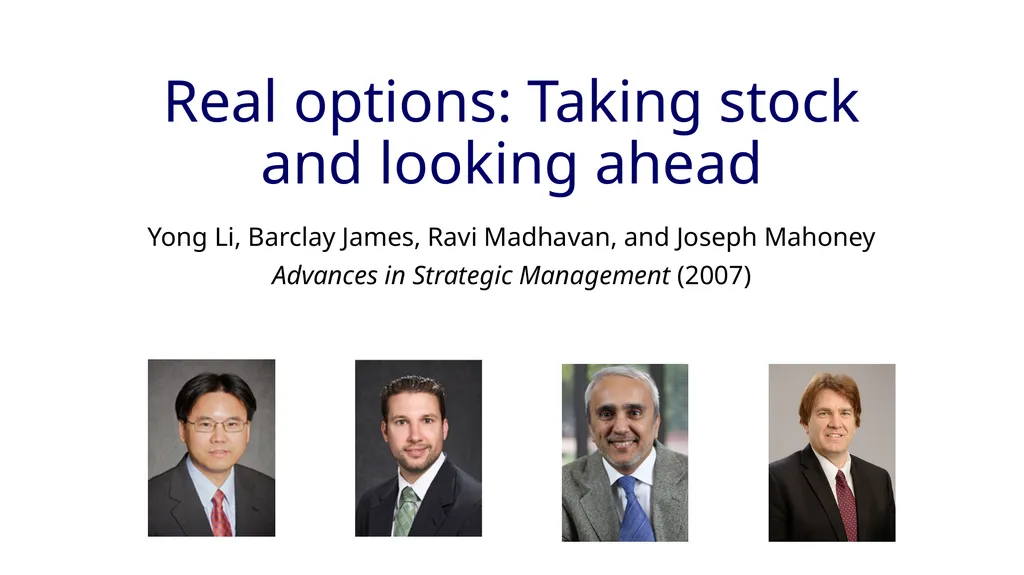
Real options: Taking stock and looking ahead Yong
Author: jane-oiler | Published: 2025-06-27
Description: Real options: Taking stock and looking ahead Yong Li, Barclay James, Ravi Madhavan, and Joseph Mahoney Advances in Strategic Management (2007) How to invest or organize activities whether and when to invest or exit Taking Stock:
Download Presentation
Download the PPT/PDF: Download
Transcript:
Loading transcript…